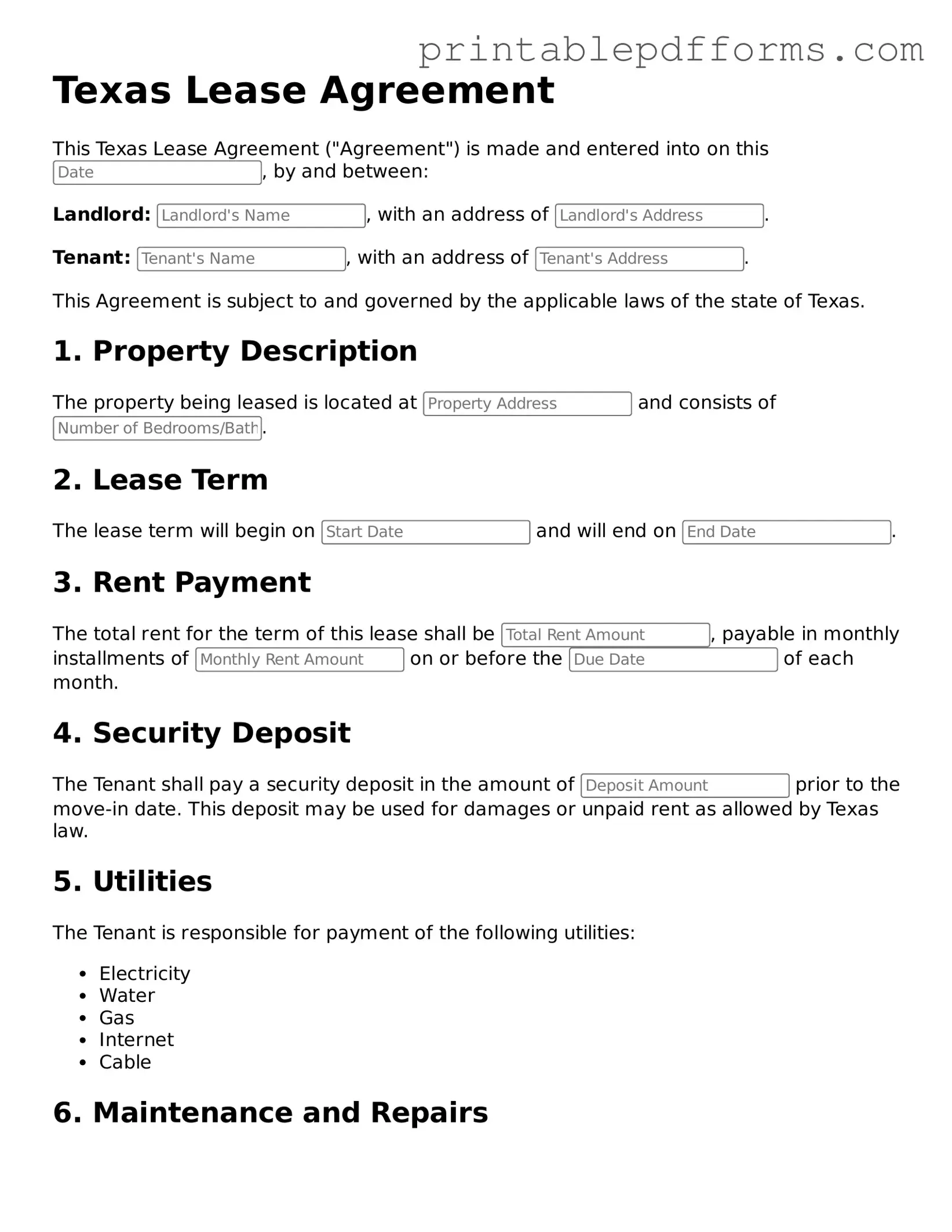Texas Lease Agreement Document
A Texas Lease Agreement form is a legal document that outlines the terms and conditions between a landlord and a tenant for renting residential or commercial property in Texas. This form serves to protect the rights and responsibilities of both parties throughout the lease term. For a smooth leasing experience, consider filling out the form by clicking the button below.
Create This Document Online
